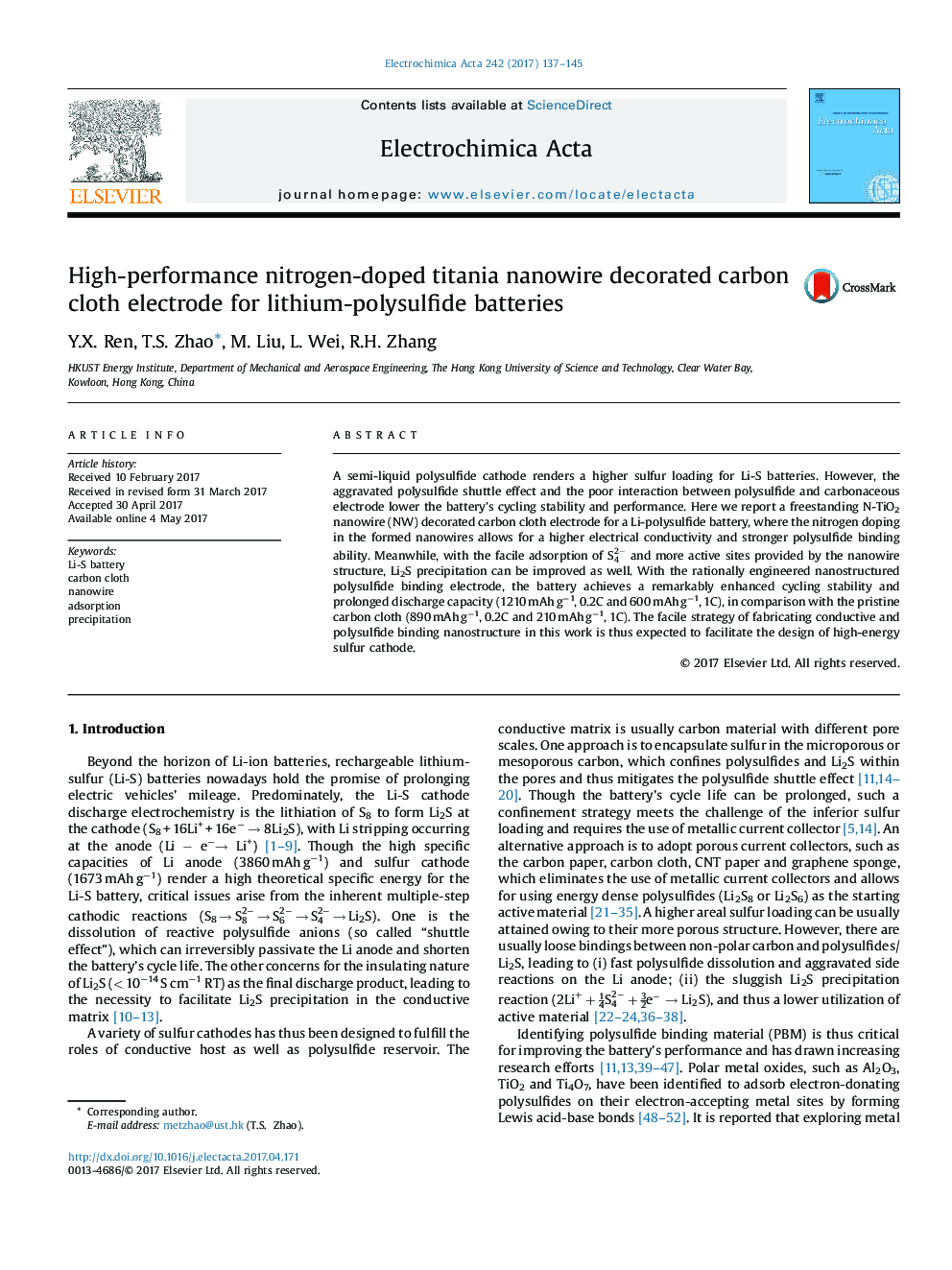| Article ID | Journal | Published Year | Pages | File Type |
|---|---|---|---|---|
| 6471173 | Electrochimica Acta | 2017 | 9 Pages |
â¢N-TiO2 nanowire decorated carbon cloth was developed for Li-polysulfide batteries.â¢N doping in TiO2 nanowire promotes electron transport and polysulfide adsorption.â¢Rate capacity was much improved with the nanowire structured carbon cloth.
A semi-liquid polysulfide cathode renders a higher sulfur loading for Li-S batteries. However, the aggravated polysulfide shuttle effect and the poor interaction between polysulfide and carbonaceous electrode lower the battery's cycling stability and performance. Here we report a freestanding N-TiO2 nanowire (NW) decorated carbon cloth electrode for a Li-polysulfide battery, where the nitrogen doping in the formed nanowires allows for a higher electrical conductivity and stronger polysulfide binding ability. Meanwhile, with the facile adsorption of S42â and more active sites provided by the nanowire structure, Li2S precipitation can be improved as well. With the rationally engineered nanostructured polysulfide binding electrode, the battery achieves a remarkably enhanced cycling stability and prolonged discharge capacity (1210 mAh gâ1, 0.2C and 600 mAh gâ1, 1C), in comparison with the pristine carbon cloth (890 mAh gâ1, 0.2C and 210 mAh gâ1, 1C). The facile strategy of fabricating conductive and polysulfide binding nanostructure in this work is thus expected to facilitate the design of high-energy sulfur cathode.
Graphical abstractDownload high-res image (131KB)Download full-size image
